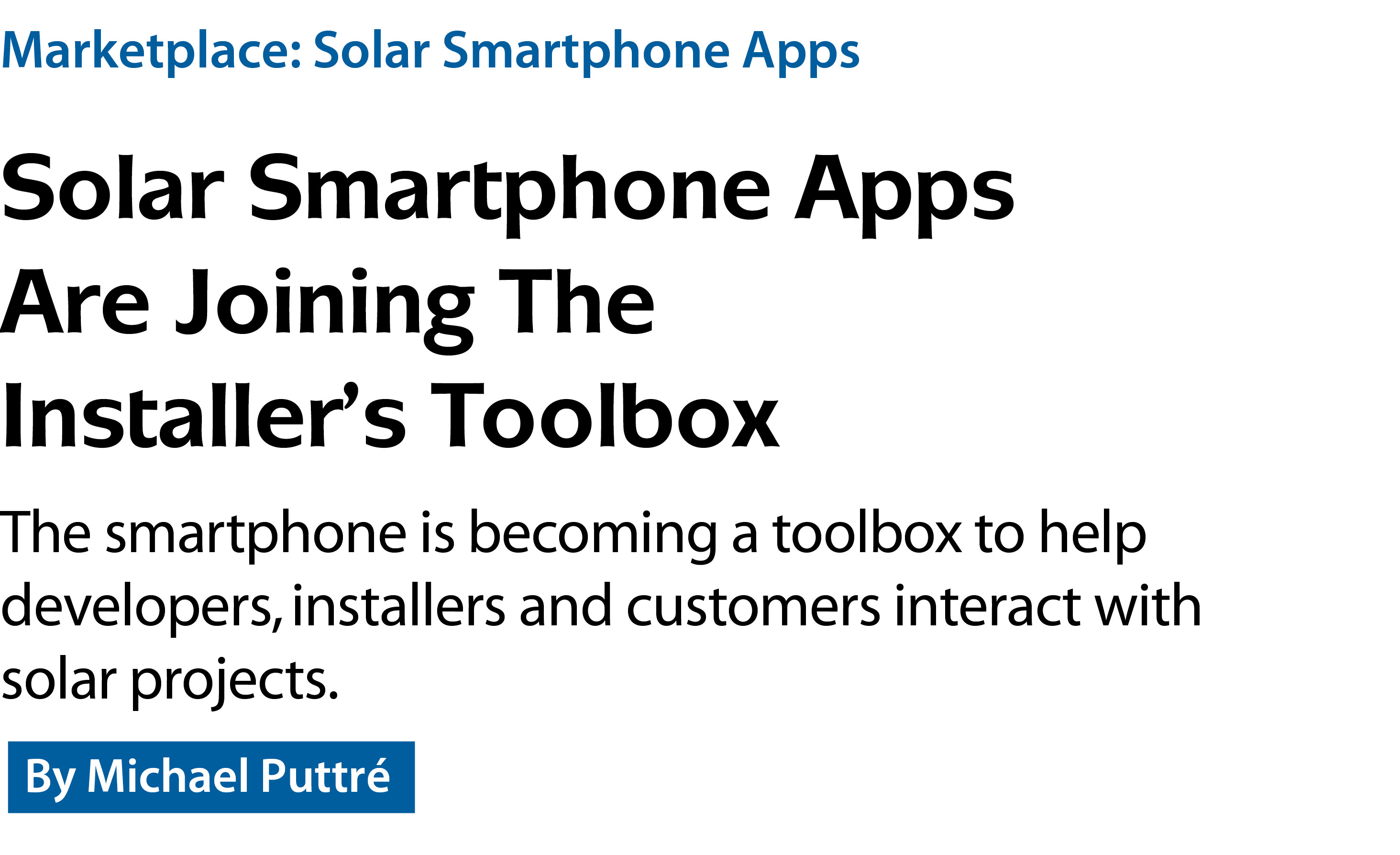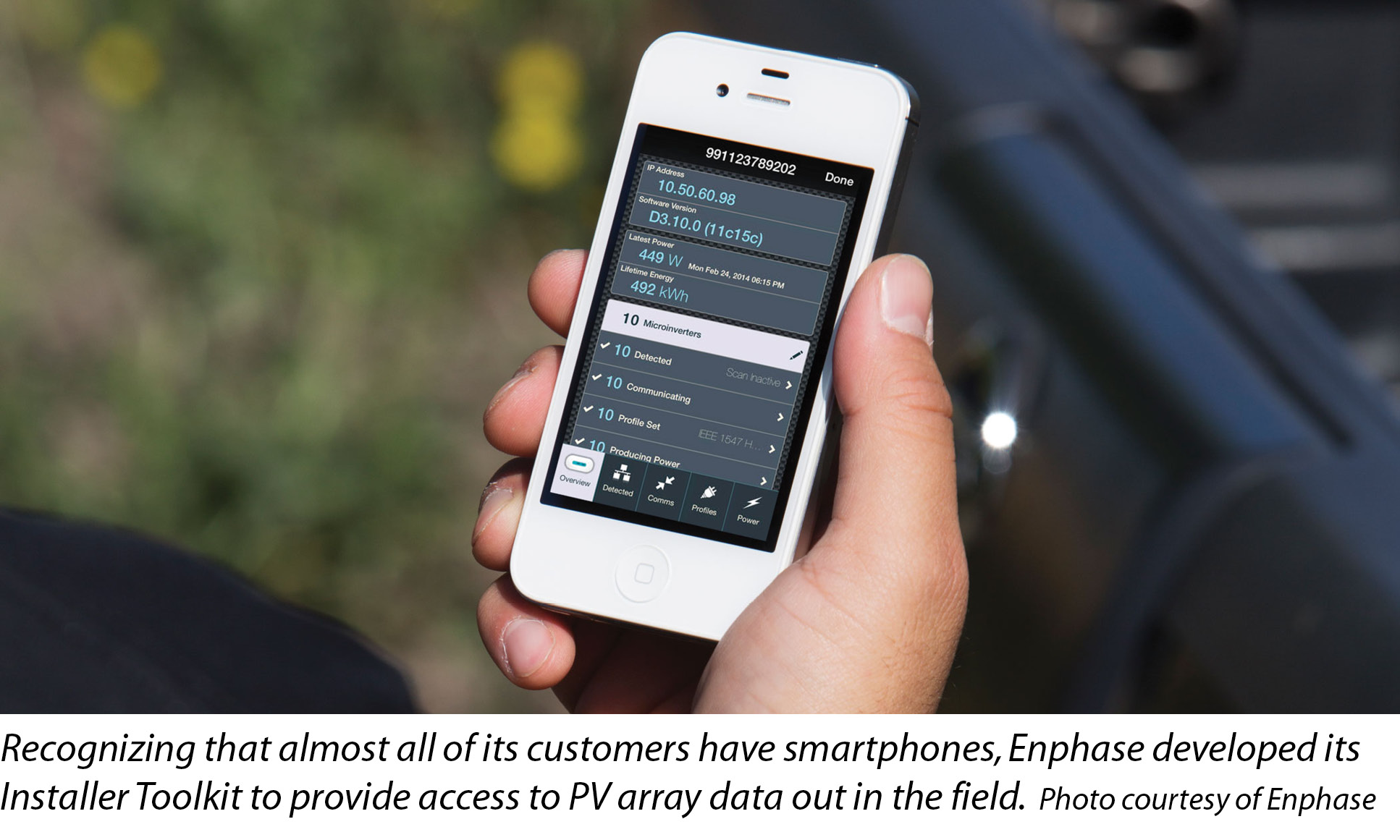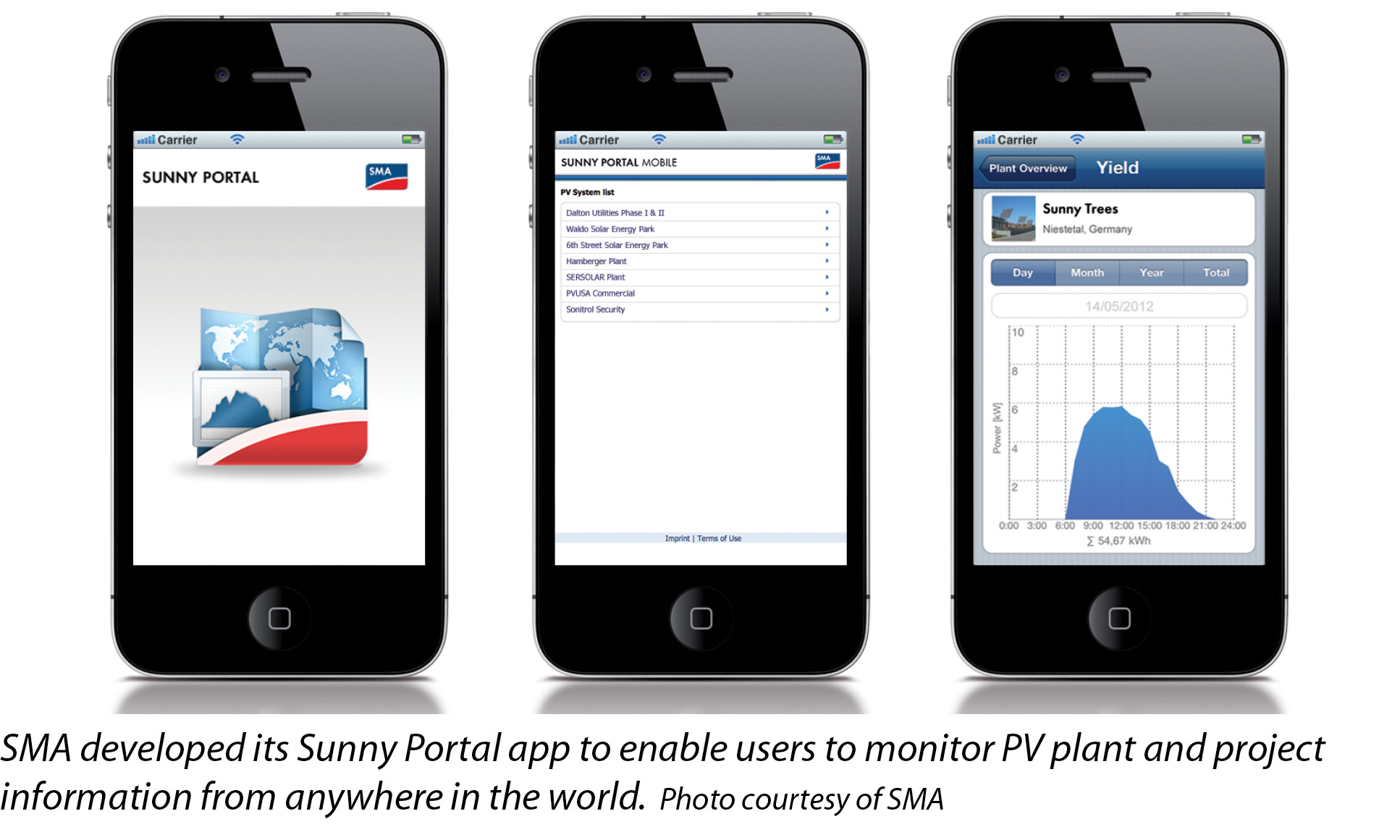

301 Moved Permanently
Smartphones are nothing new, but new apps for them are appearing all the time, making them all the more useful. The solar sector has been developing apps that are enabling installers and other professionals to turn their smartphones into hand-held toolboxes.
Enphase Energy developed its Installer Toolkit in recognition of the fact that the vast majority of people carry smartphones. Software is an important facet of Enphase’s line of micro-inverters, and the company places corresponding emphasis on applications development.
“The Installer Toolkit was sort of a natural progression from our other software systems,” says Oz Robledo, a customer support trainer at Enphase. “The smartphones we have now are more powerful than the computers we used to land on the Moon. From my perspective, it was just a matter of taking the information we were already collecting and putting it in installers’ hands.”
The main function of the Installer Toolkit is in the registration of the photovoltaic array. In this sense, installation is the principal application for the apps. In Access Point Mode, a user can log into Envoy, which is Enphase’s gateway that communicates with the inverters.
To build the array map, the user scans the serial number stickers of the micro-inverters that are connected to each panel. By concept, users would peel off the stickers and use them to create a physical map of the array.
“We’ve even seen people using the back of pizza boxes to place the stickers and create their map,” Robledo says.
Using a compatible scanner, users are able to build that array in software on their smartphones. The process enables installers to move through the arrays and build the map as they go. Robledo says this can be a significant time-saver in itself, particularly for larger sites. “You can scan 50 micro-inverters in under two minutes,” he says.
Once the system is set up, the Installer Toolkit enables users to verify that the array is functioning as designed. Through a local Wi-Fi connection, installers can monitor how many devices are detected, whether they are communicating properly, and if they are producing power as expected.
“With one app, an installer can, after they verify everything, produce a report that says, ‘On this day, at this time, everything is working properly,’” Robledo says. “This report can be emailed and serves as a permanent record.”
The app is intended to be useful for more than just the initial array setup. The Installer Toolkit provides access to Enphase’s Enlighten software, which is used for PV system operations and maintenance functions. If one of the modules is not performing up to snuff, for example, with the map that was created during design, a person performing maintenance can know the exact location of the suspect unit and go right to it. Moreover, the app provides information on the DC voltage, the AC voltage, the current and other vital signs.
According to Robledo, Enphase’s status as a software developer has enabled it to keep the Installer Toolkit in-house. This has proven useful for ensuring compatibility with the company’s mission-critical applications and for being able to respond to customer feedback.
The biggest request Enphase has received is the request for an Android app. Until the release of the latest version in April, the Installer Toolkit was made only for the iOS system. In addition, the system is paired with a scanner, which was also iOS only.

“We’ve made a Bluetooth barcode scanner compatible with the app so Android users of the Installer Toolkit can build system maps by scanning, as well,” Robledo says. “Once that got released, we could almost hear the cheers over here.”
The allure of the smartphone was also apparent early at SMA Solar Technology AG. In 2009, SMA optimized its Sunny Portal website for Web-enabled cell phones.
Andreas Strusch, strategic product manager for online solutions at SMA, says the increased demand for smartphone applications for both personal and professional uses among all PV stakeholders led the company to develop and release the Sunny Portal application for the iPhone in 2010. A Sunny Portal application for Android devices appeared in 2012.
“The iPhone and Android applications have been available for years and are extensively used by our customers on a daily basis,” Strusch says. “Many of our recent updates are based upon customer requests - for example, better tablet support - and will be considered for upcoming versions. We plan to expand our online services for mobile device users with additional applications and optimized websites.”
The Sunny Portal app is targeted toward a variety of stakeholders and supports them with different access roles. Users are able to monitor the current power and historic yields of PV plants along with events. The application’s logbook offers an event history of the system. In addition, the app enables access to project descriptions, including financial information.
The Sunny Portal application provides a snapshot of any registered PV system, regardless of configuration or size. The application boasts a visual display of a system’s energy yield for the day, month, year and life-to-date of the system, in addition to listing its CO2 savings in tons per year. This data is uploaded daily via the SMA Sunny WebBox, a communication hub that continuously collects data from the solar inverters.

Additional data displayed by the Sunny Portal application includes the system’s commission date, size, and properties and parameters of the modules, inverters and communications hardware used. The app also provides the system’s location, including latitude, longitude and time zone.
Users can also record their own system data, from additional technical details to contact information for the PV planners and installers.
Smartphones can serve installers as more than just gateways into larger software systems. A number of companies are developing stand-alone apps for installers to fill out their virtual toolboxes. Cincinnati-based mounting systems maker RBI Solar has released its Solar Shading Calculation app, which is designed to calculate the inter-row spacing for commercial and utility-scale PV projects.
The app helps users to determine the post-to-post distance and inter-row spacing in the field using smartphones and tablets. Users enter the geographical location, tilt angle and solar module height and then the app calculates the post-to-post distance and inter-row spacing based on the input data.
The promise of apps as a means of reducing installation and other soft costs has drawn the attention of the U.S. Department of Energy’s SunShot Initiative. In January, SunShot awarded a grant to Los Angeles-based Pick My Solar to develop an app for capturing electricity usage data and enabling homeowners to search for solar power options through an online marketplace.
Pick My Solar’s PVimpact app will collect information about energy usage in real time and make it available through the online marketplace. The system aggregates three principal pieces of data: the homeowner’s electricity usage, solar system production and contractual details of the solar system.
Solar equipment manufacturers will be able to use PVimpact to access a pool of captured data on solar equipment performance. The software will also enable utilities to study electricity consumption and production trends from residential solar installations.
Marketplace: Solar Smartphone Apps
Solar Smartphone Apps Are Joining The Installer’s Toolbox
By Michael Puttré
The smartphone is becoming a toolbox to help developers, installers and customers interact with solar projects.
si body si body i si body bi si body b
si depbio
- si bullets
si sh
si subhead
pullquote
si first graph
si sh no rule
si last graph